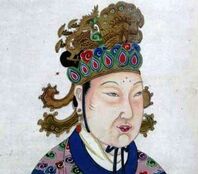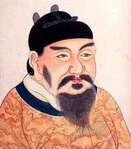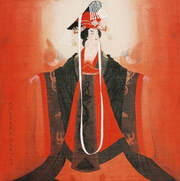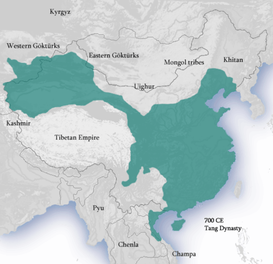
Since the beginning of history, women have contributed an unbelievable amount of knowledge, discovery, and talent in every field resulting in the changing of technology, law, social development, and attitudes. Unfortunately, history often immortalizes inconsequential events and minimizes some major events to the point where they are left out of history books and school curriculum.
Not everyone – man or woman – with noteworthy accomplishments gets credit for those achievements, however remarkable they may be. That’s too bad.
The names and accomplishments of many women such as Rosa Parks, Susan B. Anthony, Helen Keller, are well recorded in history and studied by students. Taylor Pittman of the Huffington Post writes that “While the Harriet Tubmans and Amelia Earharts certainly deserve the legacies they've earned, it's important to shine a light on some other women whose names you might not know--but who also helped shape the future of our nation.”
Women may not always get the historical credit their male counterparts do, but as these women show, they were always there doing the work.
HISTORY NEEDS SOME SPACE
Because it’s not an exact science, History is capricious in other ways, as well. Nothing can be written, photographed, painted, or otherwise recorded without a point of view through the eyes of the creator. Even a sound recording can be incomplete. My point is that in the act of physically recording an event, regardless of how it happens, there is an attitude projected about the value of and the motivations for the occurrence.
Over time, the perceived outcome of any action can viewed in a positive, negative, or indifferent light, regardless of how people felt about it at the time, or which side of the story they favor.
Source: Facebook
me.me/i/think-women-weaker-sex

International Women’s History Month is celebrated in March by the United States, the United Kingdom, and Australia. In Canada these achievements are celebrated in October.
This action was a long time in coming, in my humble opinion, but since then many women have joined the ranks of the worldwide heroes whose names and stories are known to the general populous. Unfortunately, not all people get the credit they deserve for the contributions they make and are often overlooked by scholars of history and the public. To-day, there are many famous women whose names have become household words – they are even studied in school – so I intend to spend the month of March blogging about some of the women whose achievements have been overlooked by history and the school system.
Wu Zetian, Emperor of China-
Photo source: Wikimedia Commons

Wu Zetian was the only female emperor in Chinese history and one of the most controversial monarchs … even considering contemporary rulers. She was known by several names and ruled effectively during the Tang Dynasty (618-907 CE). The Tang Dynasty at the time was a strong unified empire after four centuries of political discord and foreign interaction. This dynasty signified a turning point for women and was a period of time when, throughout China, their voices were heard despite the Confucianism teachings that women were unfit to rule.

IN THE BEGINNING
Wu Zetian was born in Wenshui in 624, to a noble family. Her father was a prominent chancellor, and she was educated in politics, music, and history. Strong willed, she scorned girly things expected of a female and preferred to read and write, which were male activities. Instead, her father encouraged her and also allowed her to travel with her parents, giving her a wide view of political affairs.
At the age of 14 (possibly 13) she was taken to Tang palace to become one of Emperor Tai Tsung’s fifth–tier concubines. She was young and it took a while, but she rose through the ranks quickly to become the emperor’s mistress. He was impressed with her knowledge of history, her ability to read and write, and her equestrian skills.
During this time at the palace, she also met Crown Prince Kao Tsung, who later became Emperor Gaozong.
RISE TO POWER
Even though Wu Zetian was a favored concubine of the emperor, historians believe she was also sharing a bed with Prince Kao Tsung during the same time.
In 649, when she was 25, Emperor Tai Tsung died, presenting Wu Zetian with a dilemma. Upon the death of an emperor, his concubines were sent to a Buddhist Nunnery to live in chastity. I’m sure you can imagine Wu’s reaction. She didn’t like that idea for squat.
Whether she actually went and was brought back to the palace or managed to stay isn’t clear. Most of the sources claim she was at the nunnery for more than a year and then brought back by Kao Tsung, by then named Emperor Gaozong, who made her his favorite concubine. Emperor Gaozong
Photo source:en.wikipedia.org/wiki/Gaozong

By the time Wu had given birth to two sons and a daughter in 654, she decided it was time to get rid of the Empress. The stories are that while Emperor Gaozong was on a trip, she strangled her own daughter, accused the Empress of the murder, and stripped the woman of her title. Most historians disagree the child wasn’t murdered and believe she may have died of carbon monoxide poisoning from the lamps and poor ventilation. Either way, Lady Wang was gone and Wu Zetian was proclaimed empress in 655.
Image: auction.zhuokearts.com
Photo source: www.trendingpod.com/empress-wu-zetian/

ROLE REVERSAL
Early records contained rumors of sex-scandals in Wu Zetian’s court, and after she became emperor, she took on four or five of lovers, including a monk whom she eventually had executed because of his greed an abuse of power, and two young brothers.
According to encyclopedia.com/women/, “If WuZetian is judged by the traditional females virtues of chastity and modesty, then she falls short of expectation. But if she is observed in the context of the sexuality of the male rules, then the number of her favorites is insignificant.”
Despite her rise to power through manipulations, murders, and support of the intellectual and religious establishments, history acknowledges she was a better ruler than her sons in both vision and statecraft. Toward the end of her reign she became paranoid and a little ditzy. Ultimately, at the age of 80, she was forced to abdicate in favor of her exiled son Zhongzong and his wife Wei. She was in very poor health anyway by this time and died a year later.
During her rule as dowager empress and emperor, a stable economy and low taxation enabled population and economic growth and a period of relative peace in her empire of 60 million people.

Let’s put our female emperor into perspective.
First, Wu Zetian challenged the traditional male dominance of power, state, sovereignty, monarchy, and political ideology. She succeeded in a male-ruled and power-focused society where women were deemed unfit to rule or have any voice at all in government, and rule was passed only from father to son. The challenge of the status quo alone was a huge step.
The fact that she not only functioned and survived as emperor is amazing. She proved a woman could have the strengths the culture attributed to only men, including political ambition, long-range vision, skillful diplomacy, power drive, decisive resolve, shrewd observation, talented organization, hard work, and firm cruelty.
In other words, Wu Zetian’s reign showed everyone that the attributes needed in diplomacy and leadership were not restricted to men, and that the rules of succession were out of whack, at least in relation to her.

The result of rewriting events is that Tang dynasty record-keeping gives precise details despite the fact that the events occurred 1,300 years ago. In Europe records are often limited to who was the ruler but not who were his advisers and what they did on particular days. After generations of historians and scholars working to separate the truth from the fiction, the general consensus is that she was iron-fisted and not afraid of acting as her male counterparts would have acted, but she was not quite the brutal monster she’s often made out to be in the “official” records and legends.
Now, let’s look at what she did do. In each case, different writers and historians have found a flip-side to her actions, painting them as motivated by sheer desire for power. Let’s see what you think. As Dowager Empress and Emperor Wu Zetian accomplished the following:
● Created new characters for the Chinese system of writing, still known today as Zetian Characters. These characters were supposed to replace between 10 and 30 of the older characters and were Wu's attempt to change the way her people thought and wrote. Although these characters were removed after her reign they still exist as a Chinese dialect in written form.
● Changed the composition of the ruling class by removing the entrenched aristocracy from influencing her court.
● Gradually modified the civil service examinations to recruit men of merit to serve in the government, taking the most vital step to transform aristocracy into a merit-worthy system.
● Allotted political clout to some women, but did so without challenging the Confucian tradition of excluding women from participating in the civil service examinations.
● Improved the public education system public, hired dedicated teachers, and reorganized the bureaucracy and teaching methods.
● Reformed the practice of agriculture by implementing a system of taxation that rewarded officials whose people produced the most crops and taxed their people the least.
● Ordered farming manuals to be written and distributed.
● Had the land surveyed for the first time.
● Built irrigation ditches to help grow crops.
● Redistributed the land so everyone had an equal share to farm, increasing production to an all-time high.
● Reformed military exams for commanders to show competency, to measure intelligence and decision making, and reformed selection process to include interviews rather than appointment based on family connections.
● Ordered successful campaigns against Korea, inspiring confidence in her military decisions. Her spy network and secret police stopped rebellions before they had a chance to start and the military campaigns she sent out enlarged and secured the borders of the country.
● Took back dynasty lands which had been invaded during the reign of Emperor Taizong and redistributed them so they were not all held by aristocrats.
● Re-opened the Silk Road, which was closed because of a plague in 682 CE.
Whatever else she was, Emperor Wu Zetian was a champion of women’s rights and of the lower classes. Her motives were to ensure her own authority, but her actions and politics had long range impacts and reinforced the legitimacy of women as active decision-making members in the ruling class.
Promoted by her policies, Chinese society in the Tang period transformed from one dominated by a military and political aristocracy to one governed by a scholarly bureaucracy drawn from the gentry.
□
Sources:
https://www.headstuff.org/culture/history/wu-zetian-female-emperor-china/
http://www.womenofchina.cn/womenofchina/html1/people/history/1706/4652-1.htm
https://historicalmusingssite.wordpress.com/2017/02/22/wu-zetian-ruthless-autocrat-or-enlightened-despot/
https://www.rejectedprincesses.com/princesses/wu-zetian
https://tdfmm.wordpress.com/2018/05/05/wu-zetian/
https://en.wikipedia.org/wiki/Wu_Zetian
totallyhistory.com/empress-wu-zetian/
https://www.encyclopedia.com/women/encyclopedias-almanacs-transcripts-and-maps/wu-zetian-624-705
https://www.chinasage.info/wuzetian.htm
https://www.chinasimplified.com/2014/03/28/wu-zetian-chinas-female-emperor/
https://www.bing.com/search?q=Wu%20Zetian%20(624-705)&cbir=sbi&imageBin=&qs=n&form=QBRE&sp=-1&pq=wu%20zetian%20(624-705)&sc=0-19&sk=&cvid=6D13797C5176447989931DF0CC4BEF6D
https://en.wikipedia.org/wiki/Emperor_Gaozong_of_Tang
https://www.factinate.com/people/42-ruthless-facts-wu-zetian-empress-china/
https://www.factinate.com/people/42-ruthless-facts-wu-zetian-empress-china/
https://www.trendingpod.com/reviews/inspire/lessons-for-women-from-empress-wu-zetian/
https://www.smithsonianmag.com/history/the-demonization-of-empress-wu-20743091/
https://www.ancient.eu/image/4649/china-during-wu-zetians-reign/
 RSS Feed
RSS Feed